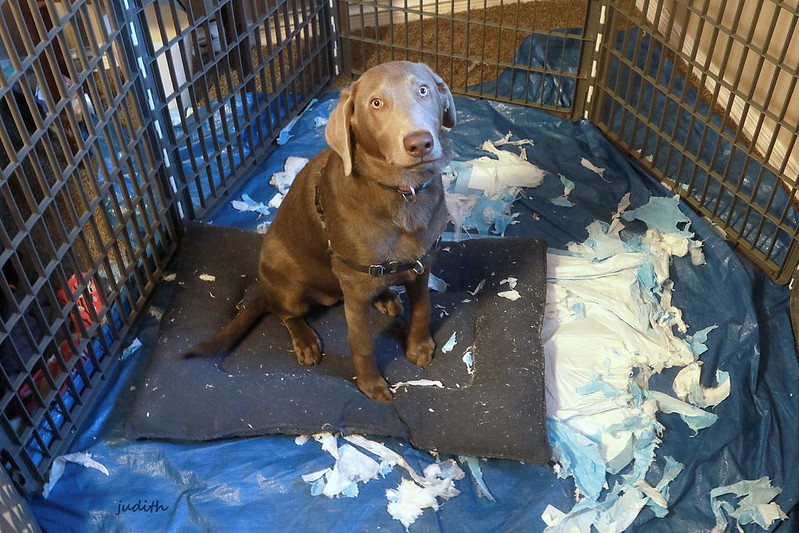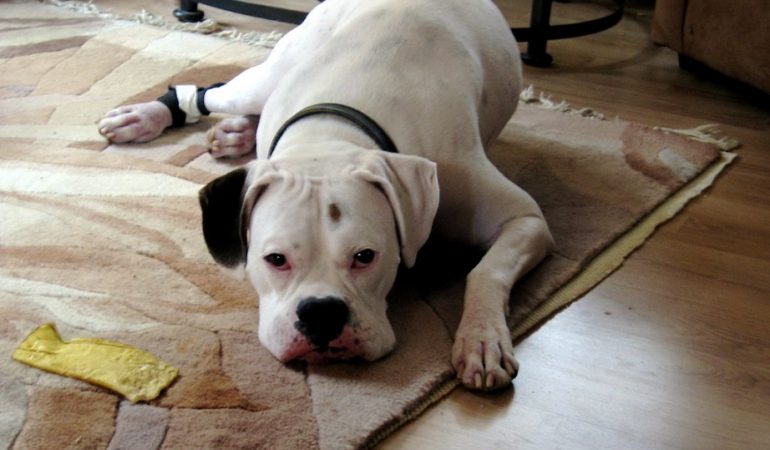Separation Anxiety – Symptoms, Causes, & Treatment
Dogs love their humans more than any other thing in the world and they are always ready to please them. They always prefer to be around their owners.
But wait! If they are trying to be with their parents more than enough and don’t want to leave them even just for a second, they are more like suffering from separation anxiety. Yes, and separation anxiety may result in a disaster if not taken care timely.
Some common symptoms of separation anxiety are excessive barking, howling, chewing everything they find, urinating within the house, etc. Along with that, when they see their pet parents preparing to leave the home, they start whining, panting, and drooling.
So, if your dog shows one or more of these symptoms and you are trying to get more information about this condition, you are in the right place. In this article, we are going to cover everything about Separation Anxiety you need to know and its possible treatments.
Table of Contents
What is separation anxiety?
In simple words, your dog may suffer from separation anxiety when he/she is strongly attached to you, and when left alone, he shows stressful behavior. Those who have not spent their time with a dog suffering from separation anxiety may not feel the frustration of those who are dealing with it. There may be one or more reasons behind this.
To prevent separation anxiety in your fur babies, it is recommended to train them from an early age. So, they won’t be giving you a tough time as they grow up.
What are the common reasons for Separation Anxiety?
- Super-attachment with the owner
- Stressful past life (If it is a rescued dog and had a terrible experience with the past owners or in the shelter)
- Change of home, ownership, schedule, or daily family routine
- Loss of a family member
- Left alone for the first time
There may be some other reasons and you need to understand your dog to figure out the possible reason. Also, if you are unable to figure it out, you should talk to your vet in this regard.
What are the common symptoms of Separation Anxiety?
- Destructive Chewing – The dog chews anything and everything he finds and it is disastrous for the dog, as well as, you. If he chews something valuable, it is a disaster for you and if he chews something toxic, it is a disaster for the pup.
- Excessive barking and howling – He will keep barking and howling for hours.
- Tail chasing – Your dog will chase its tail like a tornado.
- Digging – It will dig wherever gets a chance to do so.
- Accidents in the house – It will urinate and defecate in the house.
- Anxious behaviors – whining, drooling, panting, trembling, shivering, pacing, etc.
- Attempts to escape – The doggy tries to escape which may end up in a serious accident or injury.
These are some of the common symptoms of separation anxiety in dogs and unfortunately, these are among some of the major reasons people abandon their dogs.
How to keep your dogs from Separation Anxiety?
There are several treatments that may be helpful in preventing separation anxiety in dogs. Let’s have a quick look at them.
- Exercise and enrichment activities – Make sure your dog has enough physical and mental exercise that is required for his age and breed. Tug-of-war, running, ball chasing, hide-n-seek, puzzle toys, and different training sessions are some of the important activities that tire your dog. And a tired dog will most likely be settled down easily when you leave it alone.
- Crate training – Most people usually portray crates as a cruel place for a dog but believe us it isn’t if used appropriately. In fact, if you crate-train your dog from an early age, it will be a place to relax and enjoy at the same time. A crate with chew toys, food-dispensing toys, and enrichment activities would be the best combo. The purpose is to teach your dog how to spend its time when left alone in the crate, as well as, to consider the crate a place of rest for him. And yes, you are not supposed to keep your dog in the crate all the time and just during the time when you leave it alone or when it is rest time.

Credit: Judecat(Xmas time at Cat Hill Farm) via Flickr
- Don’t be responsive to clingy behavior – Whenever you are around or come back home after a long time, your pup may show clingy behavior or over-excitement but you should remain calm and act cool. Along with that, teach your dog the “stay” command and start staying away for short periods. If your dog has an accident or damaged something, don’t be rude and punishing as it may worsen the problem.
- Be rewarding – Stay out of sight from your puppy for a short interval of time and give him a treat when you come back. Gradually, increase the time interval of your disappearances. Also, whenever you are preparing to go outside, throw a treat at your puppy and make it a routine, so your puppy will associate your departure with the treats.
How to treat separation anxiety in dogs?
If somehow, your dog develops severe separation anxiety conditions, you should not panic, instead, it is recommended to act wisely to get rid of it. S0 given below are some quick ways to gradually reduce this problem.
See your vet:
Most people usually post their pet-related problems on social media and ask people to give them a solution. Being a responsible dog parent, you should talk to your pet instead of sharing your story on social media. The vet may be able to find the root cause after knowing the history of your dog.
Medications:
Well, there are medications like fluoxetine and clomipramine to treat the symptoms of anxiety in dogs but it is better to ask your vet.
Exercise:
Yes, you may be wondering that we have already mentioned exercise to help keep your dog from separation anxiety. But if somehow your dog has developed it, you still can reduce its effects by exercising, walking, and running your dog. Dogs get bored when there is no activity and that may be one of the reasons behind separation anxiety.
Act wisely:
Whenever you are about to leave the house, toss some treats toward your pup. Leave a shirt or any cloth you have recently worn and your smell will calm your dog. When you leave home or come back home, behave cool and calm so your dog doesn’t get over-excited.
Use distracting toys:
Leave interacting or distracting toys along with your dogs while they are home alone. You can use a Kong for that purpose. Fill it with peanut butter, yogurt, or any other thing your dog loves, and your dog will spend most of its time licking/chewing this Kong.
Wrapping it up:
So, it was everything you needed to know about Separation anxiety, its symptoms, causes, and ways to treat it. Remember, it’s the owner who is responsible for his dog’s spoiled behavior and attitude. The best practice is to start training and socializing your dogs from day one of their arrival at your home. And if they, unfortunately, develop behavior issues, treat them instead of leaving them outside a Shelter or abandoning them on the road.
Recommended read – Newfiedoodle Dog Breed Info

